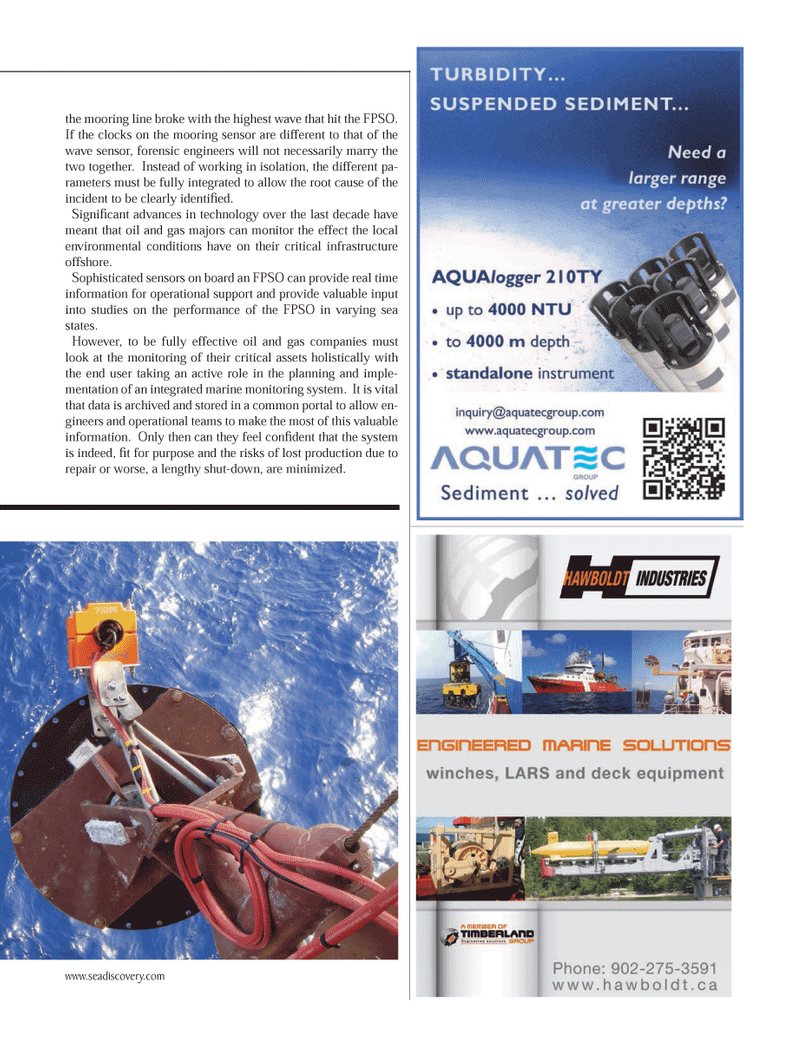
Page 45: of Marine Technology Magazine (November 2013)
Fresh Water Monitoring & Sensors
Read this page in Pdf, Flash or Html5 edition of November 2013 Marine Technology Magazine
the mooring line broke with the highest wave that hit the FPSO. If the clocks on the mooring sensor are different to that of the wave sensor, forensic engineers will not necessarily marry the two together. Instead of working in isolation, the different pa- rameters must be fully integrated to allow the root cause of the incident to be clearly identiÞ ed. SigniÞ cant advances in technology over the last decade have meant that oil and gas majors can monitor the effect the local environmental conditions have on their critical infrastructure offshore. Sophisticated sensors on board an FPSO can provide real time information for operational support and provide valuable input into studies on the performance of the FPSO in varying sea states. However, to be fully effective oil and gas companies must look at the monitoring of their critical assets holistically with the end user taking an active role in the planning and imple- mentation of an integrated marine monitoring system. It is vital that data is archived and stored in a common portal to allow en- gineers and operational teams to make the most of this valuable information. Only then can they feel conÞ dent that the system is indeed, Þ t for purpose and the risks of lost production due to repair or worse, a lengthy shut-down, are minimized. www.seadiscovery.com MTR #9 (34-49).indd 45MTR #9 (34-49).indd 4512/13/2013 10:03:25 AM12/13/2013 10:03:25 AM

 44
44

 46
46
